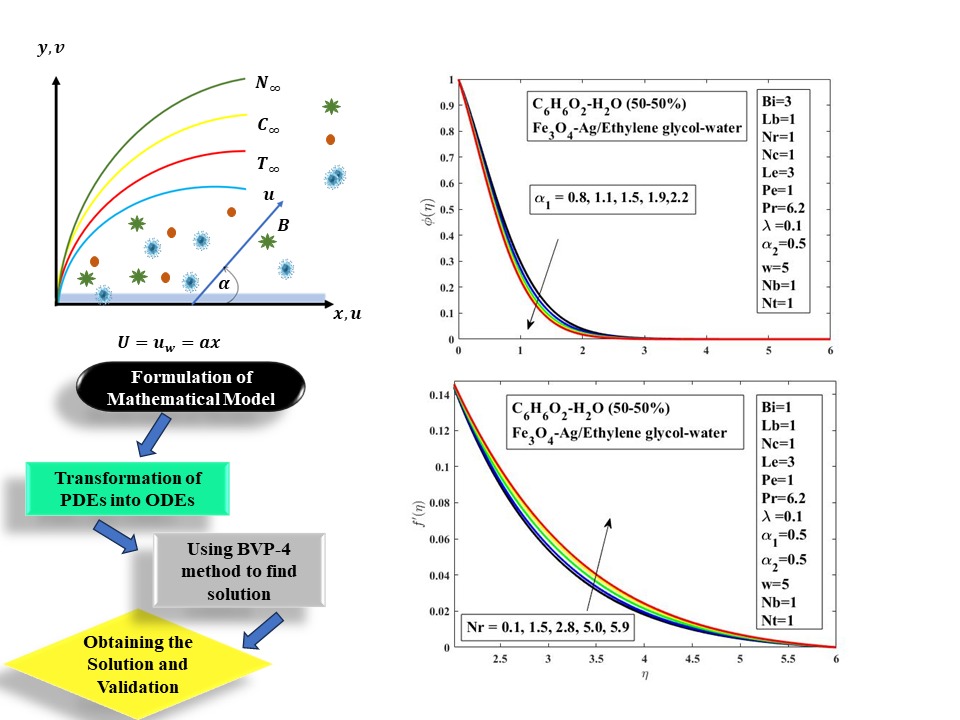 Open Access
Open Access
ARTICLE
Bioconvective Hybrid Flow with Microorganisms Migration and Buongiorno’s Model under Convective Condition
1 Department of Mathematics, University of Gujrat, Gujrat, 50700, Pakistan
2 Department of Mechanics and Aerospace Engineering, Southern University of science and Technology, Shenzhen, China
3 Faculty of Engineering and Technology, Future University in Egypt, New Cairo, 11835, Egypt
4 Department of Mathematics, College of Science, Qassim University, Buraydah, 51452, Saudi Arabia
* Corresponding Author: Ali Hassan. Email:
(This article belongs to the Special Issue: Computational and Numerical Advances in Heat Transfer: Models and Methods I)
Frontiers in Heat and Mass Transfer 2024, 22(2), 433-453. https://doi.org/10.32604/fhmt.2024.044121
Received 21 July 2023; Accepted 25 October 2023; Issue published 20 May 2024
Abstract
Heat transfer improves significantly when the working fluid has high thermal conductivity. Heat transfer can be found in fields such as food processing, solar through collectors, and drug delivery. Considering this notable fact, this work is focused on investigating the bio-convection-enhanced heat transfer in the existence of convective boundary conditions in the flow of hybrid nanofluid across a stretching surface. Buongiorno fluid model with hybrid nanoparticles has been employed along the swimming microorganisms to investigate the mixture base working fluid. The developed nonlinear flow governing equations have been tackled numerically with the help of the bvp4c. The effects of relevant parameters on the flow dynamic have been portrayed in a graphical representation. The velocity profile decreases by raising the levels of buoyancy ratio and mixed convection in the range of . It has been discovered that when bioconvection levels rise, motile microbe migration abruptly slows, which results in a decrease in fluid acceleration. The concentration of fluid flow declined for the Lewis number, but the opposite trend has been observed for the elastic parameter, thermophoresis parameter, and buoyancy ratio. With rising values of Brownian motion and thermophoretic diffusion, the surface drag and Nusselt number decrease significantly. Whereas, the opposite trend has been observed when the values of the thermal Biot number, Prandtl number and buoyancy ratio are enhanced. Additionally, data from this study have been validated by comparison with those that have previously been published, and an appropriate rate of agreement has been observed.Graphic Abstract

Keywords
Cite This Article
 Copyright © 2024 The Author(s). Published by Tech Science Press.
Copyright © 2024 The Author(s). Published by Tech Science Press.This work is licensed under a Creative Commons Attribution 4.0 International License , which permits unrestricted use, distribution, and reproduction in any medium, provided the original work is properly cited.


 Submit a Paper
Submit a Paper Propose a Special lssue
Propose a Special lssue View Full Text
View Full Text Download PDF
Download PDF Downloads
Downloads
 Citation Tools
Citation Tools